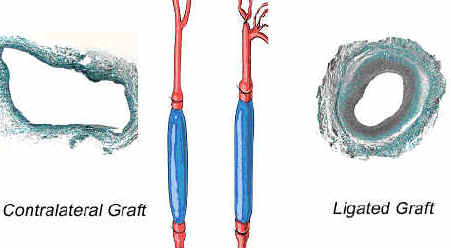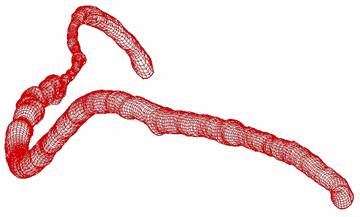Impact of Shear Stress on Early Vein Graft Remodeling
Arterial occlusive disease affects millions of people and is one of the leading causes of death in the United States. Bypass grafting uses a vein taken from another part of the body to replace the obstructed blood vessel and insert it into the arterial system to provide better blood flow. However, restenosis can still occur anywhere from months to years. What’s missing is an understanding of how these vein grafts adapt to the arterial environment. In particular, the physical hemodynamic forces play a role in regulating the balance between the intimal thickening and expansive remodeling, which govern the morphologic changes in the vein graft (Figure 1).
In order to understand early vein graft adaptation, researchers have looked into computational models to evaluate the hemodynamic forces in the remodeling process. With computational models (Figure 2), researchers can plan experiments, study the effects of the hemodynamic forces involved in the remodeling process, and even evaluate wall shear and tensile forces in complex geometries. The objective of this project is to look at the impact of wall shear and tensile forces in a stenosed vein graft using both commercially available software and our own algorithm. In addition, studies to identify a possible correlation between shear stress and lumen reduction are being looked at with computer modeling. The hope of these projects is to develop new therapeutic approaches to prevent lumen narrowing in vein grafts.


Figure 2. Computational model of vein bypass graft.